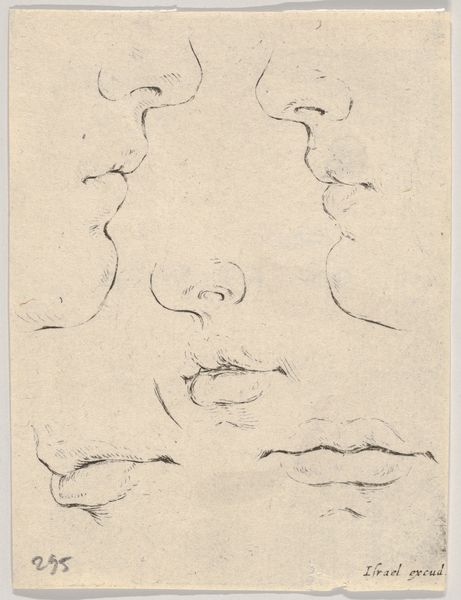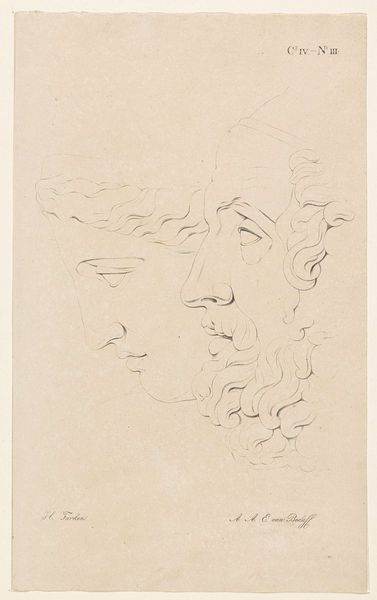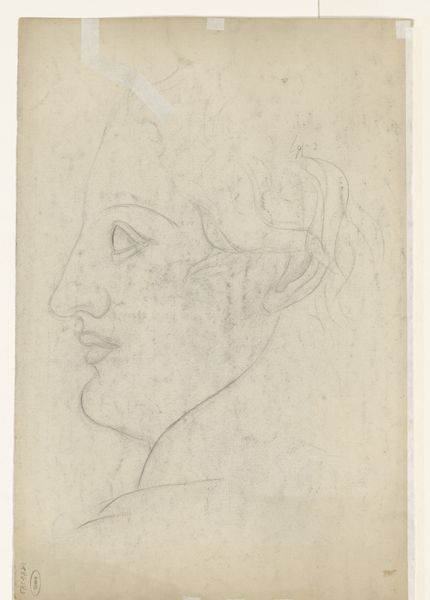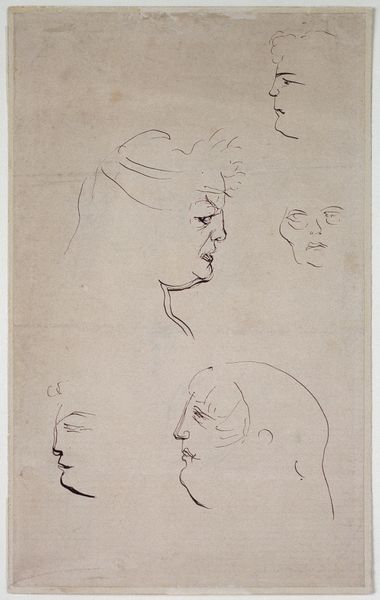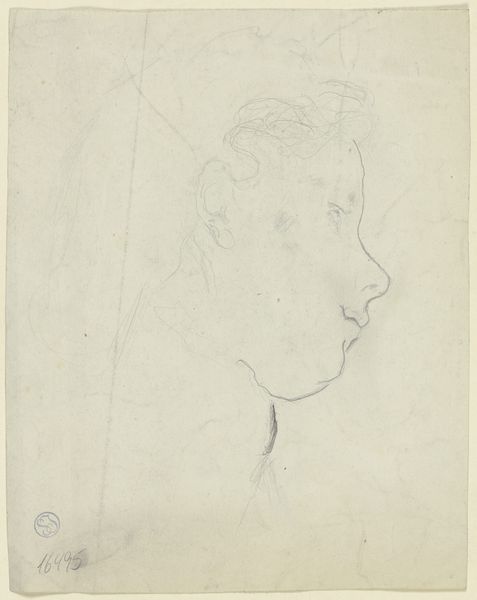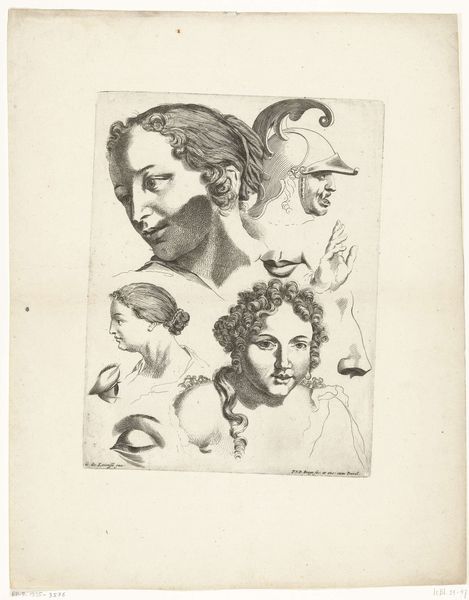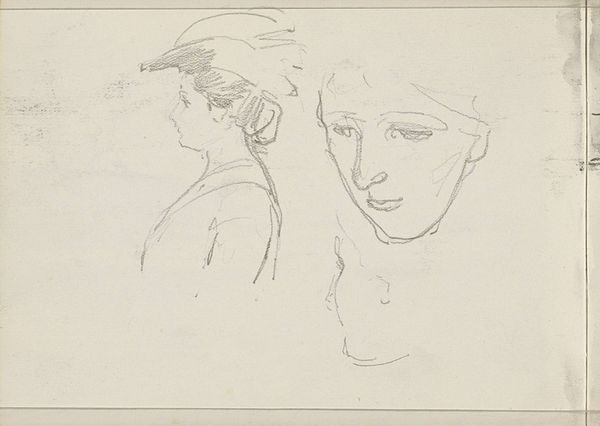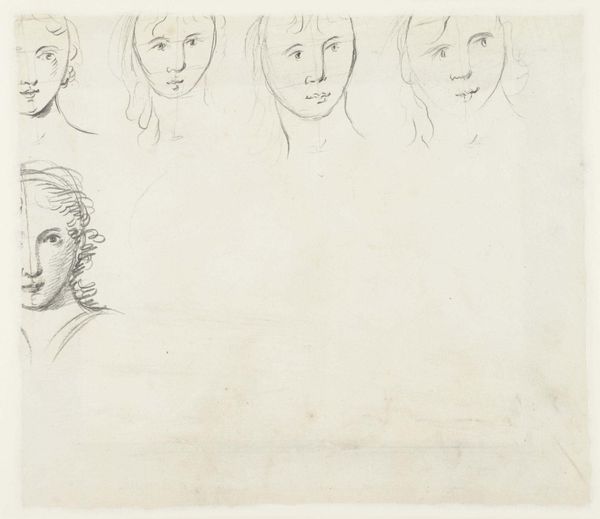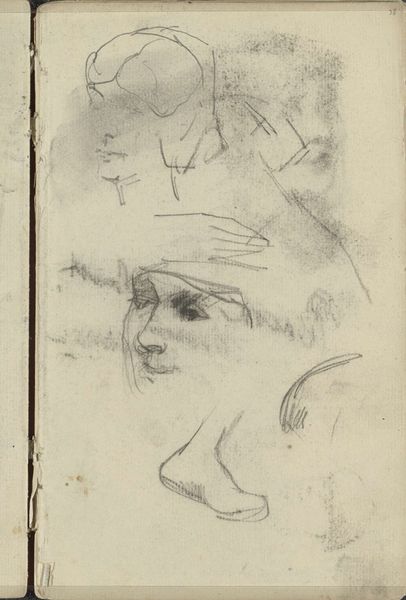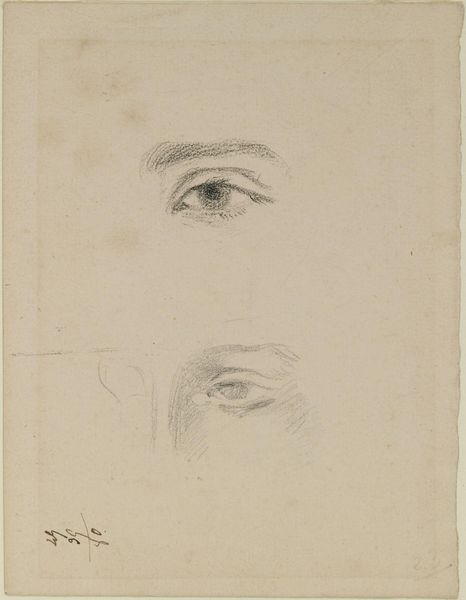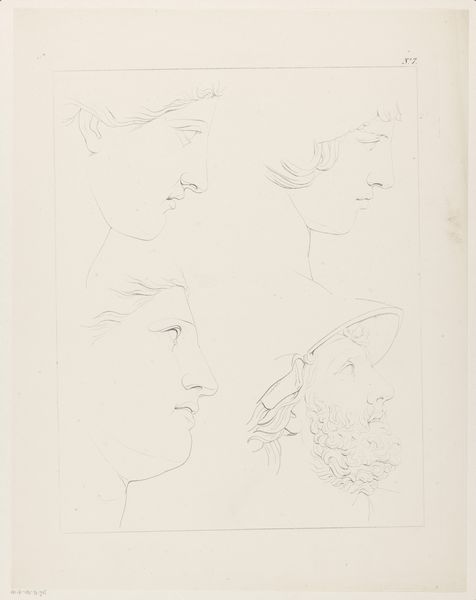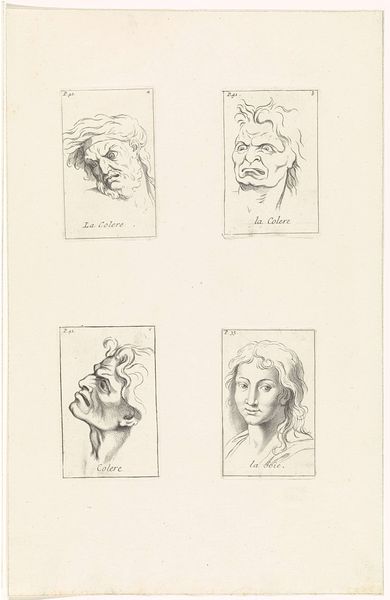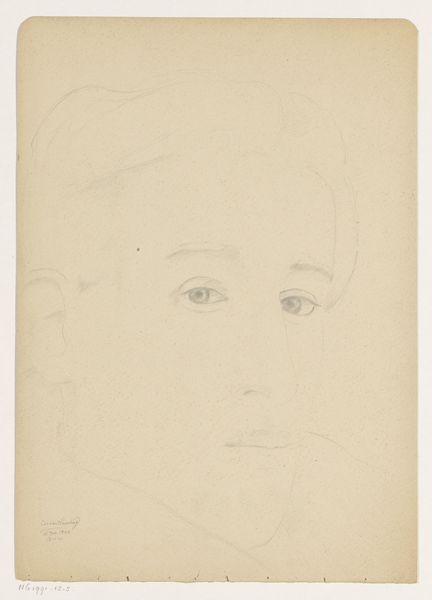
drawing, pencil
#
drawing
#
neoclacissism
#
light pencil work
#
pen sketch
#
pencil sketch
#
classical-realism
#
personal sketchbook
#
idea generation sketch
#
ink drawing experimentation
#
pen-ink sketch
#
pencil
#
sketchbook drawing
#
pencil work
#
sketchbook art
Dimensions: height 388 mm, width 241 mm
Copyright: Rijks Museum: Open Domain
Curator: This pencil drawing from 1822 is titled "Twee gezichten van klassieke sculpturen" which translates to "Two Faces of Classical Sculptures" by Henricus Turken and currently resides at the Rijksmuseum. Editor: It's immediately striking—delicate, almost ghostly. The sparse lines make it feel unfinished, like a fleeting glimpse into an artist's process. I'm drawn to the very subtle shading, the almost nonexistent definition, which adds to the ethereal quality of the work. Curator: Indeed, it appears as a personal sketchbook page, a study of classical forms through line and shadow. Neoclassicism emphasized a return to the perceived purity of classical antiquity, and we see it here in these idealized facial features. Consider what these forms signify; perhaps they embody concepts of reason, order, and harmony that the era valued. Editor: Right. And that very return hinged upon a ready supply of cheap paper for initial sketches such as this. Without those economics, could such idealized drawings truly filter down into art students' and amateurs' practices? That lightness is beautiful but comes from a material reality. This seems less a finished statement and more a crucial step in a longer chain of production and training. Curator: I appreciate that contextual layer; however, let’s look at how the lack of colour enhances the artwork's function as a mirror of the archetypal form itself. The absence seems intentional; each contour has more significance, a testament to the Platonic ideal each sculptor attempted to realise in stone, which Turken reinterprets on paper. These aren't just faces; they represent an ideal human form honed by ancient culture, a canon Turken references and refracts through his artistic labor. Editor: A process aided, again, by the very availability of pencil and paper due to industrial outputs. And look at the position of those sketches. Did the economics or even size of the paper available influence this work in subtle but fundamental ways? What shapes and directions emerge from a specific medium's parameters? That makes the image for me. Curator: Fair point, thinking of production and artistic method as connected makes you appreciate its conceptual roots better. It invites us to examine not only artistic expressions, but the circumstances and materials behind their form and cultural position. Editor: Exactly. I came in looking at lines and lightness and end up thinking about economies, material constraints, all the usually invisible factors in even the most 'spiritual' pursuit.
Comments
No comments
Be the first to comment and join the conversation on the ultimate creative platform.
